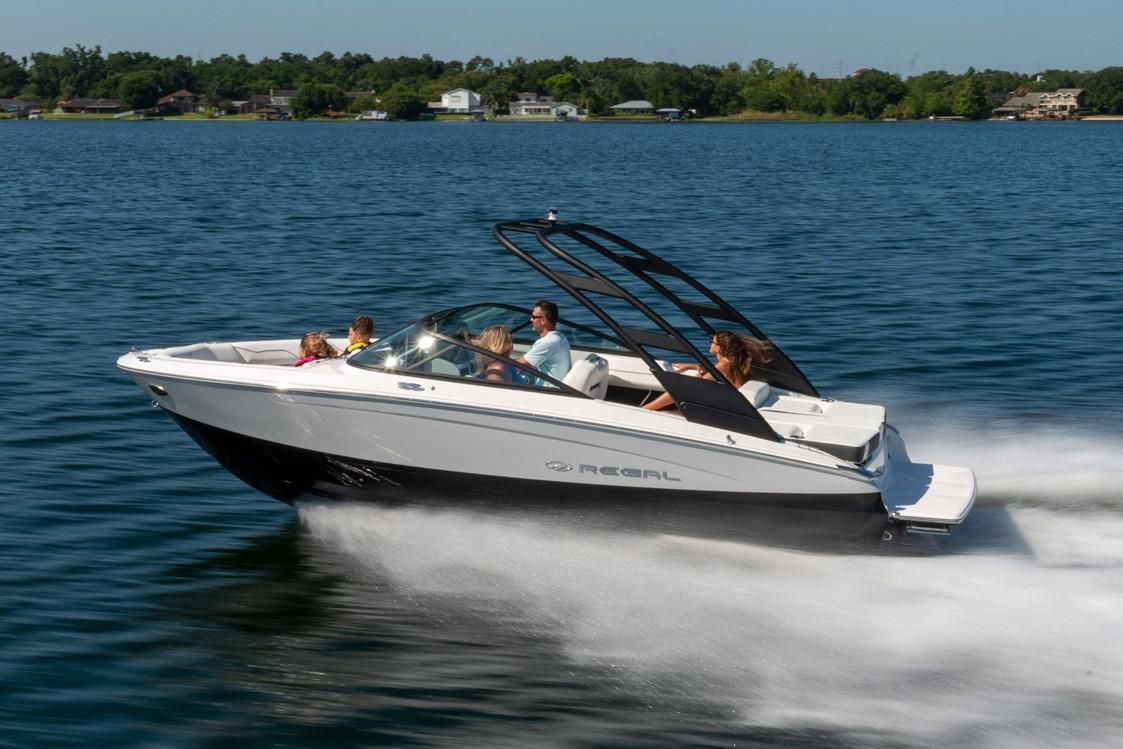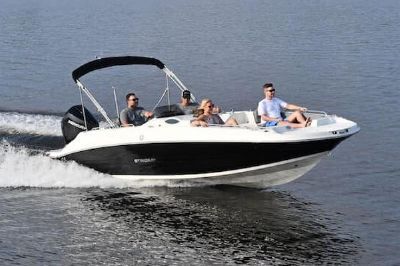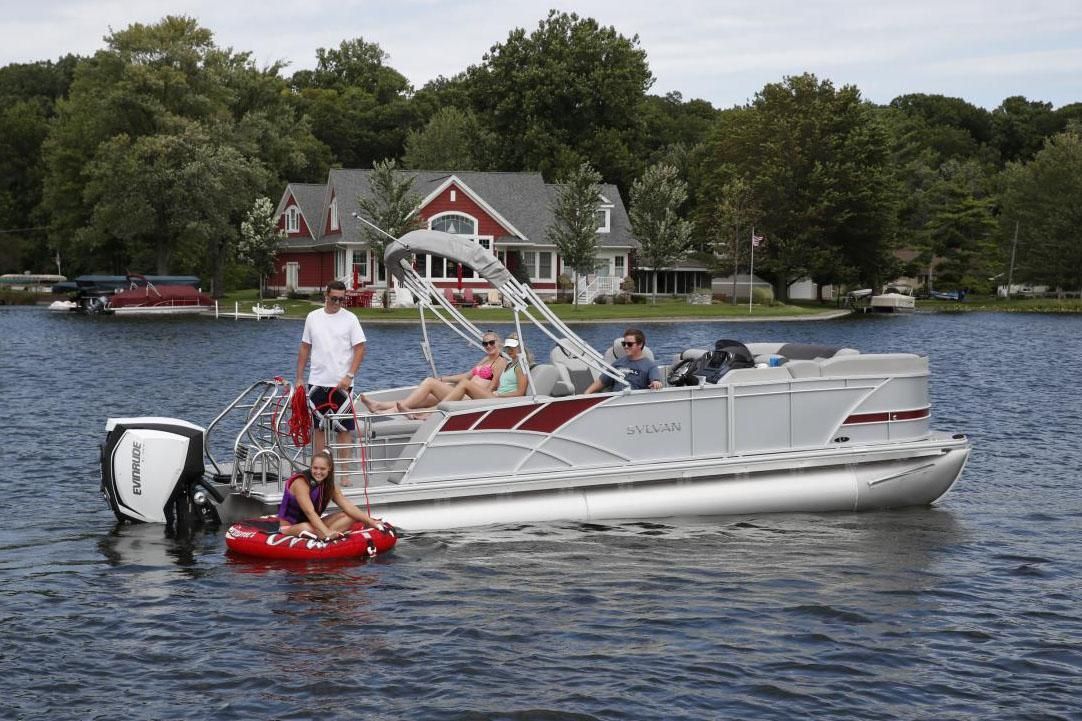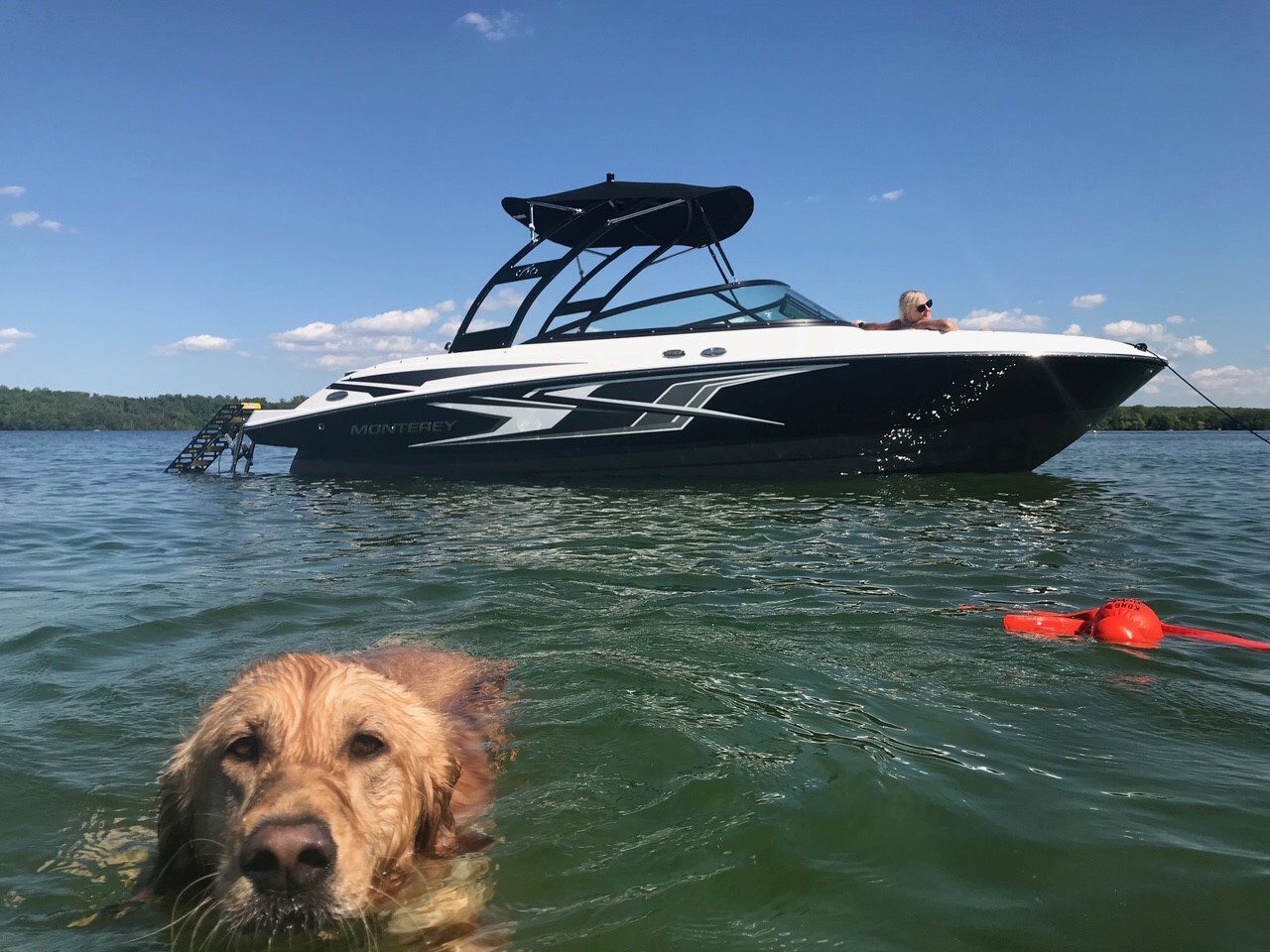With spring right around the corner and boat shows causing us to think about getting on the water, I am once again reminded by my wife of the question we asked ourselves three years ago, “What type of boat should we get?” The reason I am reminded of this is that, when we went through this before, we settled on my preference. As you can imagine, the reason the question is coming back up is that things have changed. Let me replay history for you in hopes that it will provide you with some useful considerations if you are asking yourself the same question.
Types of Boats
There are more types of boats than you can imagine. Just spend a winter day at a boat show and you will quickly get the idea. What type is best for you really comes down to where and how you will use the boat. In our case, we were able to do some quick narrowing of choices.
- We knew we wanted a powerboat versus a sailboat or rowboat.
- We knew we were going to be boating in fresh water versus salt water.
- We knew we weren’t going to spend the night on it (at least intentionally).
- We knew we weren’t going to hunt with it or do serious fishing with it.
- We knew we weren’t going to race it or play Miami Vice on the weekend.
- We knew we wanted to be below $60,000.
- We knew we wanted new or used with very low hours because we didn’t want problems.
- We knew that we needed to be able to accommodate more than three people.
- We knew that we needed to accommodate at least one dog.
That quickly got us narrowed down to looking at runabouts, watersports boats, deck boats and pontoon boats. Here is a brief summary of the key differences:
 Runabout– A typical runabout is a fiberglass, V-shaped hull that measures from 16 feet to 32 feet, comes with sterndrive or outboard power, often has a pointy or pickle-fork, open bow with seating and a walk-through windshield. They are also commonly referred to as bowriders. The runabout is the boat most people picture when they think of recreational boating.
Runabout– A typical runabout is a fiberglass, V-shaped hull that measures from 16 feet to 32 feet, comes with sterndrive or outboard power, often has a pointy or pickle-fork, open bow with seating and a walk-through windshield. They are also commonly referred to as bowriders. The runabout is the boat most people picture when they think of recreational boating.
 Watersports Boat – Also referred to as ski or wakeboard boats, a watersports boat is a bit different from a runabout, particularly in their powertrains. Whereas a runabout uses an outboard or a stern drive, watersports boats, or “tow boats” as they’re commonly called, use an inboard engine in either a direct-drive or V-drive configuration.
Watersports Boat – Also referred to as ski or wakeboard boats, a watersports boat is a bit different from a runabout, particularly in their powertrains. Whereas a runabout uses an outboard or a stern drive, watersports boats, or “tow boats” as they’re commonly called, use an inboard engine in either a direct-drive or V-drive configuration.
 Deck Boat – Deck boats commonly have a boxier shape than other types of boats, with wide bows that don’t come to a point at the front. This expands interior volume, as the boat’s full beam can be utilized from the stern to the bow. Another common trait of deck boats is that they tend to have wider, flatter bottoms than many other styles of modern powerboats.
Deck Boat – Deck boats commonly have a boxier shape than other types of boats, with wide bows that don’t come to a point at the front. This expands interior volume, as the boat’s full beam can be utilized from the stern to the bow. Another common trait of deck boats is that they tend to have wider, flatter bottoms than many other styles of modern powerboats.
 Pontoon Boat – A pontoon boat is basically a large, flat deck that’s mounted atop two or more metal tubes called pontoons. Boats with three pontoons are sometimes called “tri-toons.” These pontoons contain a lot of reserve buoyancy and allow designers to create massive deck plans fitted with all sorts of accommodations, such as expansive lounge areas, stand-up bars, and sun pads. Better tube design has also allowed builders to put ever-increasing amounts of horsepower on the stern.
Pontoon Boat – A pontoon boat is basically a large, flat deck that’s mounted atop two or more metal tubes called pontoons. Boats with three pontoons are sometimes called “tri-toons.” These pontoons contain a lot of reserve buoyancy and allow designers to create massive deck plans fitted with all sorts of accommodations, such as expansive lounge areas, stand-up bars, and sun pads. Better tube design has also allowed builders to put ever-increasing amounts of horsepower on the stern.
Considerations
Here are the main features we considered when making our choice:
Length – Bigger is better. That is so true with boats. Longer boats ride better and have more space. Our budget had us looking at boats 26 feet and less. As you can imagine, length also plays a role in power choices and handling. There’s a reason Chief Brody from Jaws said, “You’re gonna need a bigger boat.” We searched for the longest one in our price range.
Powertrain – The engine horsepower and drive arrangement are major considerations. Most of these boat types are capable of handling significant horsepower, but if you don’t know already, horsepower comes at a steep price. That steep price is not only the cost to purchase, but the cost to operate. Fuel consumption can go up fast at speed. Our budget had us looking at 300 horsepower and less. How that horsepower translates into propulsion varies. There are jet drives, inboards, outboards and sterndrives. Inboards can consume significant cockpit volume, so this was a significant negative for watersports boats. Outboards maximize cockpit space, but consume valuable swim platform real estate on runabouts and deck boats. Since we enjoy swimming off a swim platform with our dog, we focused on sterndrives and jet drives.
Handling – Deck boats with wider, flatter hulls are more stable, but bumpier. Handling and pontoons used to never be in the same sentence, but the tri-toons are changing that. It is hard to beat the traditional V-hull design of a runabout. With length limited by price, the ride and maneuverability of a runabout were the most appealing to us.
Watersports – All of these boat types can pull water skiers and tubers when equipped with enough horsepower. The advanced skier or wakeboarder/wakesurfer is looking for a wake only created by a boat loaded down in the rear with ballast tanks, so this narrows down the choices. For us, simple tubing was what we were looking for, so they all worked.
Space/Comfort/Storage – It is hard to beat a pontoon for space, comfort and storage. They will also be the easiest to board and since they are a deck or floor with seating and components fastened to it, offer numerous configurations for entertaining. A deck boat would have more space than a runabout or watersports boat due to its wider bow. An outboard motor typically provides a large storage space in fiberglass boats where the stearndrive engine normally goes. If sunbathing is a major consideration, pontoons and deck boats often incorporate loungers. Many runabouts have large sunpads over the engine compartment. Keep in mind the storage space required for fenders, dock lines and PFDs (personal floatation devices). When you account for needing one PFD per passenger along with at least one throwable, this can be significant storage consideration. Another big consideration for us was where will a cooler go. This is usually not an issue on pontoons, but can be a big one on fiberglass boats. Some come with molded spaces under seats for one. You will also want to consider the amount of watertight and lockable storage on the boat. Gloveboxes aren’t just for vehicles. Last, but not least is space to transport tubes, inflatables, skis, wakeboards, etc. Watersports boats usually have towers with racks for the skis and boards. Other boats may have ski lockers, but often are too small or narrow. Unless you plan on inflating and deflating every outing, think about transport and storage for those items. There was no question that a pontoon made the most sense here.
Protection from the Elements – All of the boat types we were looking at would subject us to wind, rain and cold, but we like the idea of a full-width windshield on a runabout or watersports boat to hunker down behind. Sun protection typically comes in the form of a canvas cover or bimini top that deploys to create shade. The pontoons boats and deck boats offered the largest covers and most shaded seating area. We felt the runabout offered the best combination of protection.
Amenities – Most boats in the price range we were in are not going to have a head, however a pontoon boat often has a privacy curtain for a portable toilet or changing room. Most boats will have some form of stereo, but newer technologies like Bluetooth and satellite radio make entertainment more enjoyable. You also want to look for charging ports for wireless devices. Once again, it is hard to beat a pontoon for the ability to add features like grills and other accessories.
Price – If you’ve set a price limit, your choices are clear. If you want the most room to entertain, stretch out and chill, buy a big pontoon with just enough horsepower to move it. If watersports are your primary reason for owning a boat, you need a watersports boat or runabout with ballast tanks. If you want something in between, get a deck boat or runabout. We were somewhere in the middle.
Styling/Looks/Appearance – There is nothing sharper than a well-polished fiberglass hull on a sunny day. We only wanted to consider colors that were timeless like white, black, navy blue, gray, etc. The trendy colors are nice to be different, but at some point, you will be different for all the wrong reasons. Remember, painting a boat is not like painting a bedroom. The color is often molded in. Use graphics that can be changed, if you want change. Some of the high-end pontoon boats are incorporating stylish fiberglass perimeter components, but the ones in our price range are aluminum fences bolted to the edge of the deck. Paint and anodizing can only do so much to prevent it from looking like a box. The style of a bowrider was the most appealing to us.
Dog-Friendly – Last, but not least, for us it had to be dog-friendly. A dog is going to be able to access most areas of the boat types being discussed here. As long as there is shade, a place to restrain the dog when launching and pulling up anchor, and a place for their food and water out of the traffic path, you should be good. It is also important that there be a place to install a dog ladder for them to get in and out of the water on their own and a place to store wet dog toys. Other considerations are whether the seats are easy to clean and remove dog hair from and will the seat and floor coverings stand up to dog toenails.
Decision
 In the end, we decided to go with a 22-foot bowrider with a sterndrive. I would like to say that my strong desire for the looks of a stylish fiberglass hull with graphics and disdain for a floating platform with a fence around it swayed the decision, but it didn’t. My wife was convinced that a pontoon boat matched our boating lifestyle the best. After much discussion and a stalemate, I was searching hard for the one thing to sway the decision (in my favor). Alas, I played off my wife’s least favorite part of boating, trailering and launching the boat. For years we had been the weekly entertainment for the locals at the boat ramp. So out of desperation, I played my ace in the hole, the increased difficulty trailering and launching a pontoon boat versus a bowrider. I told her maneuvering a pontoon at the boat ramp could result in an Oscar and a divorce. While I conceded to my wife that a pontoon boat made a lot more sense for our boating preferences, I said a pontoon boat would have to wait until we lived on a lake and didn’t have to trailer. She reluctantly agreed.
In the end, we decided to go with a 22-foot bowrider with a sterndrive. I would like to say that my strong desire for the looks of a stylish fiberglass hull with graphics and disdain for a floating platform with a fence around it swayed the decision, but it didn’t. My wife was convinced that a pontoon boat matched our boating lifestyle the best. After much discussion and a stalemate, I was searching hard for the one thing to sway the decision (in my favor). Alas, I played off my wife’s least favorite part of boating, trailering and launching the boat. For years we had been the weekly entertainment for the locals at the boat ramp. So out of desperation, I played my ace in the hole, the increased difficulty trailering and launching a pontoon boat versus a bowrider. I told her maneuvering a pontoon at the boat ramp could result in an Oscar and a divorce. While I conceded to my wife that a pontoon boat made a lot more sense for our boating preferences, I said a pontoon boat would have to wait until we lived on a lake and didn’t have to trailer. She reluctantly agreed.
Déjà Vu
So after all of the analysis we dId three years ago, why is my wife raising the question again? You guessed it. Things changed and we now live in a waterfront community with a deeded boat slip within walking distance. No more need to trailer. To make it worse, most of our neighbors who are our age have pontoon boats which provides my wife with ample opportunity to remind me what we should be doing. After spending numerous hours on their pontoon boats, I have to agree that the comfort and space of a pontoon are unbeatable. We feel crowded on our boat when hosting more than one couple. I have been on pontoon boats now with twelve people and not felt crowded. If you like to entertain, you can’t beat a pontoon boat which is why they are the fastest growing category in sales. I may be trapped. She’s even got the dog to agree, so stay tuned. Jim Perkins March 15, 2022 About the Author Jim Perkins is the Owner/President of WAG Products, LLC. His experience boating with dogs prompted him to design, develop and patent a dog ladder for his dog and boat that actually worked. As he shared what he was doing and listening to the needs of other dog owners, he introduced more designs. Today, WAG Products manufactures and sells a line of proprietary, American-made dog ladders under the brand name, WaterDog Adventure Gear® (WAG). WAG Boarding Steps™ are available for all types of boats, docks and swimming pools. https://getwag.com


Recent Comments